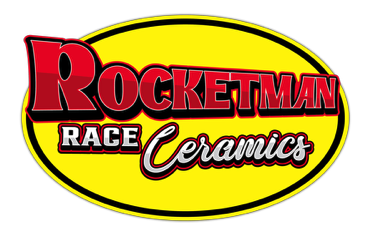Are Ceramics the right choice for my engine?
First, let’s define what a ceramic is. A ceramic is a material that is neither metallic nor organic. It may be crystalline, glassy or both crystalline and glassy. Ceramics are typically hard and chemically non-reactive and can be formed or made more dense with heat.
We also know the ionic and covalent bonds of ceramics are responsible for many unique properties of these materials, such as high hardness, high melting points, low thermal expansion, and good chemical resistance.
Typical ceramics we are already familiar with are spark plugs, heat-shields on spacecraft, brakes, body armor, and even floor tiles and cookware. The generally recognized properties of many of these materials are that they resist heat or transfer heat away from where it is wanted.
By definition, ceramic is not a material but a product specification in a wide variety of materials and applications.
What about Rocketman RACE Ceramics? After countless hours of development, testing, and real-world results, i.e. winning races and record-setting performances, we have formulated a specific set of materials that comprise the “coatings” we offer.
One of the unique properties of the materials we use that make up our QLC® coatings is that unlike the ceramics mentioned above, it actually transfers away the heat between the two materials.
For example, in a piston skirt or piston ring application, the QLC® acts as a conduit to transfer heat away from the piston and to the cylinder wall where it can then be removed from the engine via the cooling system (whether oil or water). Conversely, many ceramic coatings used on the tops of pistons work to reflect the heat into the combustion chamber.
In the case of modern race engines tolerances between the piston, ring, and cylinder wall play a vital role in the amount of potential horsepower. By controlling these tolerances, and blow-by, you can effectively build more cylinder pressure, which translates directly to pressing down harder on the piston to turn the crank. This is where we build torque, my friends.
We can confidently say, after years of development and actual results on the track, that our QLC® ceramic coatings work to help ANY performance engine not only free up horsepower by reducing friction, we can also help better transfer heat away from undesired locations that lead to better overall performance.
So, the question is then, knowing how these materials work and how performance is increased, why would you not want them on your engine’s internal components?
Call or email today to discuss your particular needs, I’m certain we can help you with your goals.
Get in Touch
Please drop us an email if you prefer and we'll get back to you as soon as we can. Thank you again for visiting our site.

